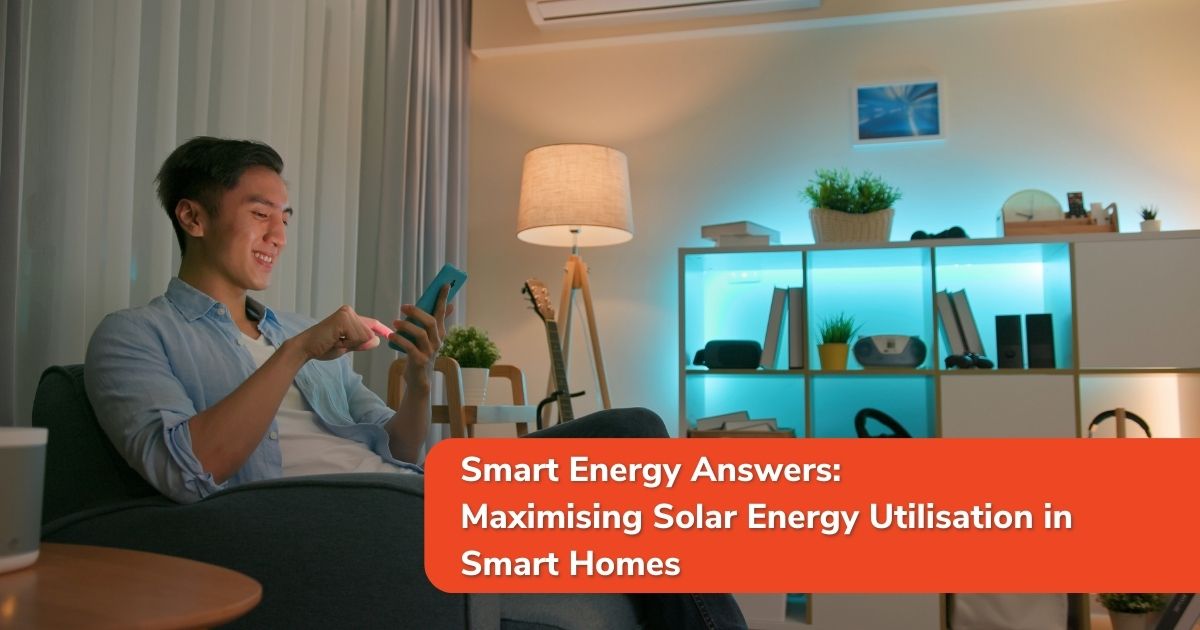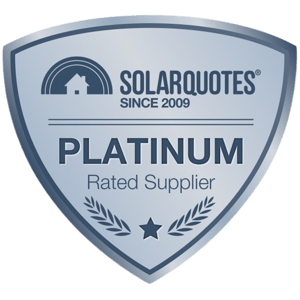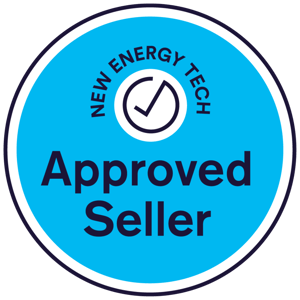Improving Efficiency of Home Solar Systems

Discover how to maximise the efficiency of your home solar system with battery storage.
Increasing prevalence of smart home technologies and solar energy systems
With the increasing prevalence of smart home technologies and solar energy systems, more and more homeowners are harnessing the power of the sun to meet their energy needs. Smart home technologies, such as solar panels and battery storage, allow homeowners to generate their own clean energy and reduce their reliance on the grid.
One of the key benefits of smart home technologies is their ability to provide sustainable and cost-effective energy solutions. By utilising solar energy systems with battery storage, homeowners can maximise their energy efficiency and save on electricity costs.
As the demand for renewable energy sources continues to grow, the integration of smart home technologies and solar energy systems is becoming increasingly common. It is important for homeowners to understand the benefits and potential of these systems in order to make informed decisions and take advantage of the available opportunities.
Importance of efficient management for cost savings and sustainability
Efficient management of home solar systems with battery storage is crucial for both cost savings and sustainability. By effectively managing the energy output of your solar system, you can optimise its performance and reduce waste.
One of the main advantages of efficient management is the ability to maximise cost savings. By tracking and analysing energy production in real-time, homeowners can identify areas where energy can be saved and adjust their energy settings and schedules accordingly. This not only helps reduce electricity bills, but also contributes to a more sustainable future by minimising energy waste.
In addition to cost savings, efficient management also plays a key role in sustainability. By utilising energy storage systems to store excess solar energy for later use, homeowners can reduce their reliance on the grid and promote the use of clean, renewable energy sources. Furthermore, by leveraging grid interaction features, homeowners can even sell excess energy back to the grid, further enhancing their cost savings and sustainability efforts.
Therefore, efficient management of home solar systems is not only beneficial for homeowners in terms of cost savings, but also for the environment in terms of reducing carbon emissions and promoting a greener future.
Utilising smart monitoring systems to track solar energy production in real-time
Smart monitoring systems play a crucial role in optimising the performance of home solar systems. By tracking solar energy production in real-time, homeowners can gain valuable insights into the efficiency and output of their system.
These smart monitoring systems provide homeowners with detailed information about key performance metrics such as kilowatt-hour (kWh) production and system efficiency. By understanding these metrics, homeowners can identify any issues or inefficiencies in their system and take appropriate actions to address them.
Real-time tracking of solar energy production also allows homeowners to make data-driven decisions regarding their energy usage. By monitoring energy production throughout the day, homeowners can adjust their energy settings and schedules on-the-go to optimise solar energy output. This ensures that the maximum amount of solar energy is generated and utilised, resulting in greater cost savings and sustainability.
Understanding key performance metrics such as kWh production and system efficiency
To effectively manage and optimise your home solar system, it is important to understand key performance metrics such as kilowatt-hour (kWh) production and system efficiency.
Kilowatt-hour (kWh) production refers to the amount of energy generated by your solar system over a specific period of time. By tracking kWh production, homeowners can determine how much energy their system is producing and compare it to their energy consumption.
System efficiency, on the other hand, measures how effectively your solar system converts sunlight into usable electricity. Higher system efficiency means more energy is being generated from the same amount of sunlight, resulting in greater cost savings and sustainability.
By regularly monitoring and analysing these key performance metrics, homeowners can identify any underperforming areas in their system and take appropriate actions to improve its efficiency. This can include cleaning the solar panels, optimising their tilt and orientation, or even upgrading to more efficient technologies.
Understanding and acting upon these key performance metrics is essential for maximising the efficiency and effectiveness of your home solar system.
Utilising energy storage systems to store excess solar energy for later use
One of the key advantages of home solar systems with battery storage is the ability to store excess solar energy for later use. By utilizing energy storage systems, homeowners can maximize their energy efficiency and reduce their reliance on the grid.
During periods of high solar energy production, when the energy generated exceeds the immediate energy needs of the home, the excess energy can be stored in the battery storage system instead of being wasted. This stored energy can then be used during periods of low solar energy production or high energy demand, ensuring a continuous and reliable power supply.
By storing excess solar energy for later use, homeowners can significantly reduce their dependence on the grid and promote the use of clean, renewable energy sources. This not only helps reduce electricity bills but also contributes to a more sustainable and environmentally friendly future.
Energy storage systems also provide homeowners with greater energy resilience, as they can continue to power their homes during grid outages or emergencies. This added peace of mind is another benefit of utilizing energy storage systems in conjunction with home solar systems.
Therefore, by incorporating energy storage systems into home solar systems, homeowners can maximize their energy efficiency, reduce their reliance on the grid, and contribute to a more sustainable future.
Leveraging grid interaction features to sell excess energy back to the grid
Home solar systems with battery storage not only allow homeowners to store excess solar energy for later use but also provide the opportunity to sell excess energy back to the grid.
By leveraging grid interaction features, homeowners can participate in net metering programs or feed-in tariffs, depending on their location and local regulations. Net metering programs allow homeowners to offset their electricity bills by selling excess energy back to the grid, while feed-in tariffs provide financial incentives for homeowners to feed excess energy into the grid.
Selling excess energy back to the grid not only helps homeowners further reduce their electricity bills but also contributes to a more sustainable energy grid. By feeding clean, renewable energy into the grid, homeowners play an active role in promoting the use of sustainable energy sources and reducing carbon emissions.
Therefore, by taking advantage of grid interaction features, homeowners can not only maximize their cost savings but also actively contribute to a greener and more sustainable energy future.
Adjusting energy settings and schedules on-the-go to optimize solar energy output
One of the key benefits of home solar systems with battery storage is the ability to adjust energy settings and schedules on-the-go to optimize solar energy output.
By monitoring solar energy production in real-time and tracking energy usage patterns, homeowners can make data-driven decisions regarding their energy settings and schedules. For example, they can adjust the timing of energy-intensive tasks, such as running the dishwasher or doing laundry, to coincide with periods of high solar energy production.
Furthermore, smart home technologies enable homeowners to remotely control and monitor their energy usage through mobile apps or online platforms. This allows homeowners to make real-time adjustments to their energy settings and schedules, even when they are away from home. By optimizing the solar energy output, homeowners can maximize their energy efficiency and cost savings.
Adjusting energy settings and schedules on-the-go also provides homeowners with greater flexibility and control over their energy usage. They can easily adapt their energy consumption to changing circumstances or unexpected events, ensuring that they make the most of their home solar system's capabilities.
Therefore, by utilizing the flexibility and convenience of adjusting energy settings and schedules on-the-go, homeowners can optimize their solar energy output and enhance their overall energy efficiency.
Integrating smart thermostats, lighting controls, and HVAC systems for enhanced efficiency
In addition to home solar systems, integrating other smart home technologies such as smart thermostats, lighting controls, and HVAC systems can further enhance the efficiency of your energy usage.
Smart thermostats allow homeowners to optimize their heating and cooling settings based on their preferences and occupancy patterns. By automatically adjusting the temperature when no one is home or when energy demand is high, homeowners can reduce energy waste and maximize their energy savings.
Similarly, lighting controls enable homeowners to automate and customize their lighting settings. By utilizing motion sensors, timers, or remote controls, homeowners can ensure that lights are only used when needed, reducing unnecessary energy consumption.
HVAC (Heating, Ventilation, and Air Conditioning) systems are another key component in the overall energy efficiency of a home. By integrating smart HVAC systems, homeowners can remotely control and monitor their heating and cooling settings, ensuring optimal comfort while minimizing energy waste.
By integrating these smart home technologies with your home solar system, you can create a cohesive and efficient energy management system. This allows for seamless communication and coordination between different devices, ensuring that energy is used intelligently and efficiently.
Therefore, by embracing the integration of smart thermostats, lighting controls, and HVAC systems, homeowners can enhance the efficiency of their home solar system and maximize their energy savings.
Analyzing historical energy data to identify patterns and opportunities for improvement
Analyzing historical energy data is an important step in improving the efficiency of your home solar system. By reviewing past energy consumption patterns, homeowners can identify trends and opportunities for improvement.
By examining energy data, homeowners can identify any areas of high energy consumption and take appropriate actions to reduce waste. This can include adjusting energy settings, upgrading appliances to more energy-efficient models, or implementing energy-saving habits and practices.
Furthermore, historical energy data can also help homeowners identify patterns related to solar energy production. By analyzing the data, homeowners can understand how different factors, such as weather conditions or changes in energy usage patterns, affect the performance of their solar system. This knowledge can then be utilized to optimize the system's efficiency and output.
In addition to identifying areas for improvement, historical energy data can also serve as a benchmark for tracking the progress and effectiveness of energy-saving measures. By regularly reviewing and comparing energy data, homeowners can ensure that their efforts to improve efficiency are yielding positive results.
Therefore, by analyzing historical energy data, homeowners can gain valuable insights into their energy consumption patterns, identify opportunities for improvement, and make informed decisions to enhance the efficiency of their home solar system.
Emphasis on the role of proactive management in maximizing savings and sustainability and next steps
Proactive management plays a crucial role in maximizing cost savings and sustainability when it comes to home solar systems with battery storage. By actively monitoring and optimizing the performance of your system, you can ensure that you are making the most of your investment and contributing to a greener future.
Some key steps for proactive management include regularly monitoring solar energy production, tracking energy usage patterns, and analyzing historical energy data. By doing so, homeowners can identify any issues or inefficiencies in their system and take appropriate actions to address them.
In addition to monitoring and analysis, adjusting energy settings and schedules on-the-go, integrating smart home technologies, and utilizing energy storage systems are also important aspects of proactive management. By embracing these practices, homeowners can optimize their solar energy output, reduce waste, and enhance the overall efficiency of their home solar system.
Looking ahead, it is important for homeowners to stay informed about advancements in smart home technologies and renewable energy solutions. By keeping up-to-date with the latest innovations and best practices, homeowners can continue to improve the efficiency of their home solar systems and further maximize their cost savings and sustainability efforts.
In conclusion, proactive management is key to maximising the savings and sustainability of home solar systems with battery storage. By taking a proactive approach and implementing the strategies and practices discussed, homeowners can optimise their energy efficiency, reduce their reliance on the grid, and contribute to a greener and more sustainable future.
%20(1).png?width=265&height=96&name=www.smartenergyanswers.com.auhs-fshubfsSmart%20Energy%20Answers%20Logo%20(HIRES)%20(1).png)

.png?width=514&height=121&name=Tesla%20Powerwall%203%20(new).png)







